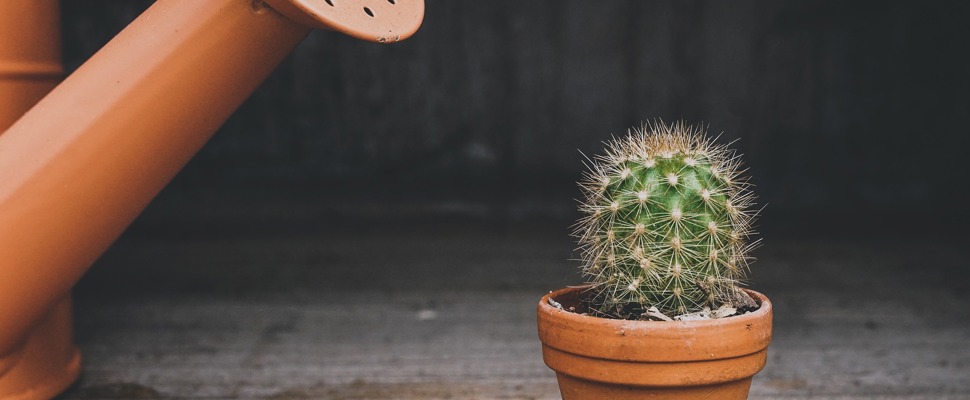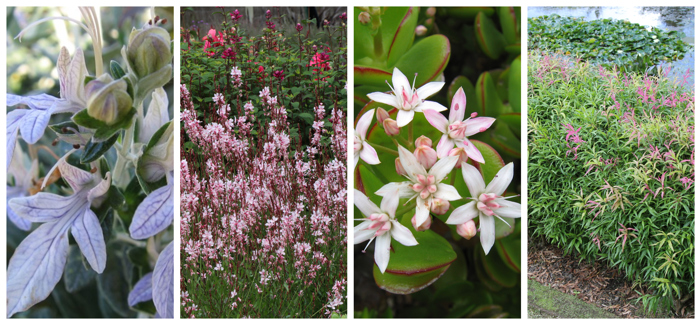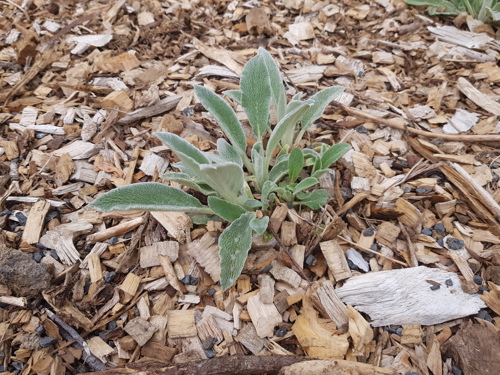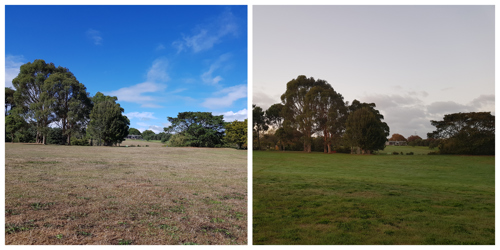
Advice for gardening in a drought
Gardening with reduced water
Soils are dry, rainfall is low, and water restrictions are firmly in place - but there are ways to keep your garden looking good in Auckland’s drought conditions.
Auckland Botanic Gardens is under the same restrictions as every home gardener in the city – hand watering only and no use of hosepipes.
So here are our recommendations for gardening in a drought.
Tip #1 - Plant Selection: Right Plant, Right Place
“We advocate that people chose plants which do well in Auckland conditions without the need for irrigation, fertiliser and insecticides,” says Curator Bec Stanley.
Finding these plants is made easier for Aucklanders through our Plants For Auckland database which distils 30 years of garden trials and experience at the Botanic Gardens into a searchable catalogue of plants and advice on where and when to plant.

Four of the many recommended Plants for Auckland that can tolerate drought conditions. L-R shrubby germander (Teucrium fruticans), Gaura 'Tallulah Rose', jade plant (Crassula ovata), and Callistemon salignus 'Great Balls of Fire'.
Tip #2 – Make your soil a sponge!
There are absolutely things you can do in your garden to keep moisture in your soil, chiefly composting and mulching.
“Adding compost to the soil before you mulch helps make the soil spongy which means it can hold water when it does rain. Organic matter like manure also improves soil’s ability to absorb and hold water. Make your soil a sponge!” says Bec.

Add mulch around plants to retain moisture in the soil.
Bare soil loses moisture, so the second step is mulching. Cover your soil with a thick layer of woodchips or arborists mulch. This will greatly help to hold in soil moisture. You can use natural products such as wool or cardboard under mulch to further improve the water holding capacity of the mulch.
Tip #3 - Planting times
At Auckland Botanic Gardens we try to plant when there is most chance of natural rain falling - in autumn and winter.
“This year has been a challenge,” says Bec, “as autumn and winter did not always deliver the rain we are used to, but nonetheless planting before spring and summer is crucial to give plants time to establish their roots before summer.”
Tip #4 - Lawns
We don’t water our lawns and you don’t need to either. Let them go brown and then marvel at the way the grass springs back to life once it rains.

Photos of our lawns taken at the end of summer and again a few days after the first autumn rains.